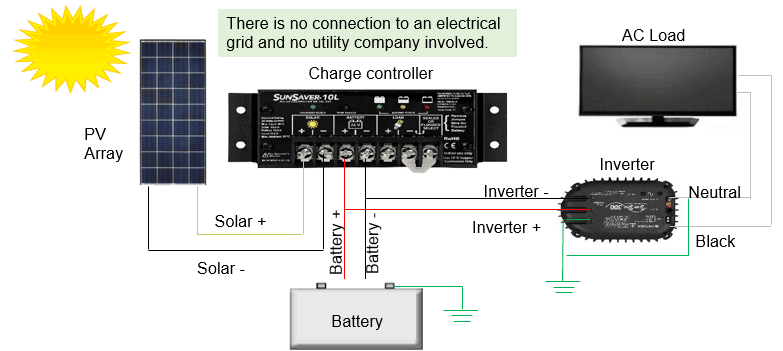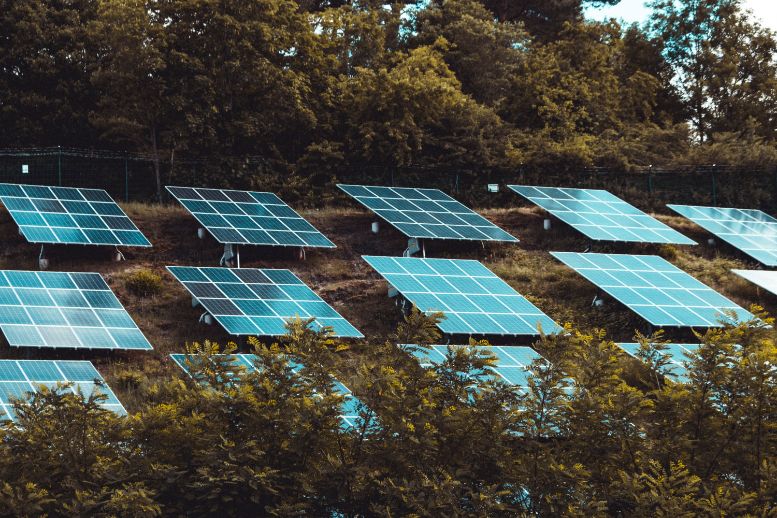If you own a solar energy system, you might have a few inquiries. A charge controller has required if your solar battery system generates more than five watts of solar power or has a capacity of more than 100 amp-hours. How about though, without a charge controller, can you charge solar batteries? A battery is required for a solar charge controller to work. In this article, we’ll explore the charge controller for you. Please keep reading.
What Is A Solar Charge Controller?
Charge controllers act as a current and/or voltage regulator to prevent batteries from overcharging and are a crucial component of almost all battery-based renewable energy systems. They serve to ensure the long-term safety and proper feeding of your deep-cycle batteries.
In order to safely and effectively charge solar batteries, solar charge controllers are required. Consider your solar panels and solar battery as being under strict regulation by the charge controller. Without a charge controller, solar panels may keep feeding power to a battery after it has reached full capacity, harming the battery and creating a potentially hazardous situation.
Types Of Solar Charge Controllers
You’ll quickly discover that there is a wide range of options when you start looking for solar charge controllers for sale online. A wide variety of brands, sizes, price ranges, and features are available, giving you the advantage of having excellent options, but it can also be overwhelming.
Maximum power point tracking (MPPT), 3-stage and/or PWM solar charge controllers, and 1- or 2-stage solar charge controllers are the three main types of charge controllers. Charge controllers for golf carts and electric cars are also available.
The most widely used charge controllers have charging current ranges of 4 to 60 amps, but more recent MPPT controllers have to charge current ranges of up to 80 amps.
Simple 1- Or 2-stage Controllers
These charge controllers, which are referred to as 1-stage or 2-stage controllers, regulate voltage in one or two steps using shunt transistors or relays. These are the oldest types and have extremely simple, occasionally ineffective, components. But some people are still drawn to them because of their dependability and affordability.
3-stage And/or PWM Controllers
PWM charge controllers are affordable and dependable and are produced by well-known companies like Xantrex, Morningstar, Steca, and Blue Sky. Their disadvantage is that, even then, they have inefficiencies in larger systems.
They should only be used when the battery voltage and the solar panels nominal voltage match.
Maximum Power Point Tracking (MPPT) Controllers
The best and most cutting-edge option is an MPPT charge controller, but they also cost a lot of money. MPPT controllers, which are made by companies like Victron Energy, OutBack Power, MidNite Solar, and others, offer an impressive 94–98% efficiency level and deliver 10–30% more power to the solar battery than other types.

An MPPT controller is typically worth the additional initial investment unless your solar system is small (cabin-sized or smaller) and its battery voltage is no higher than 24V.
MPPT charge controllers have become the new industry standard as larger, more sophisticated systems and 48V battery banks have become more widespread.
What Does A Solar Charge Controller Do?
Voltage regulation and overcharge defense are the two main duties of a solar charge controller. The amount of energy that is injected into a battery is restricted by voltage regulation.
Solar charge controllers come in two basic varieties: pulse width modulated and shunt. While pulse width modulated charge controllers are industry standards, shunt-type charge controllers are the most popular and use shunt transistors.
When the battery voltage falls below a predetermined level, the load is disconnected using a MOSFET power semiconductor switch.
Maximum Power Point Tracking (MPPT) technology is used by charge controllers to adjust the input power of solar panels. Depending on how the PV modules are set up, this method enables the maximum amount of current to be delivered to the controller.
The controller’s rated short circuit current should be multiplied by a safety factor of 125% to get the maximum source circuit current. This factor takes into account the increased irradiance value and a PV module’s capacity to produce more current than its rated voltage.
Batteries are shielded from overcharging, which can result in an explosion, by the solar charge controller. Turning off the load that is connected to the battery, also prevents overcharging.
Installing a solar charge controller is essential to safeguard your batteries because overcharging a battery can result in battery explosions. To prevent electricity from being used at night, the solar panels store energy when they are not producing it in a battery.
Can I Use A Solar Charge Controller Without Battery?
Can solar charge controllers be used without batteries, you might be wondering? Yes and no, is the response. Because it prevents the batteries from being overcharged and from receiving a reverse flow of current from the solar array, a solar charge controller is essential.
When there is little sunlight or at night, this kind of reverse flow can drain the battery. Therefore, it is preferable to install a battery before connecting the solar panels.
Solar panels can be connected to a single charge controller if you want to. However, this might cause redundant issues, and finding a solar charge controller without a battery might be challenging.
The good news is that you can use a number of charge controllers simultaneously to support your expanding solar system. For batteries with flooded lead acid, however, you should make sure to turn on the equalizing feature.
A solar charge controller without a battery will supply energy to the load but risk damaging the circuits that are connected to the solar panel’s output. A small setup can still benefit from a solar charge controller without a battery, but larger ones will perform better if they are connected in parallel.
Camping and other small 12V applications are also good fits for the PWM solar charge controller. Make sure to take the battery voltage into account when choosing a solar charge controller.
The Important Of Having A Solar Charge Controller
Blocking Reverse Current
Your battery is pumped with the current in one direction by solar panels to power them. At night, the panels might occasionally conduct a small amount of current in the opposite direction, slightly discharging the battery.
The potential loss is small, but it can be easily avoided. When they stop, some types of wind and hydroelectric generators also draw reverse currents (the majority do not except when there is a fault).
The majority of controllers work by having charge current flow through a semiconductor (a transistor) that functions as a valve to control the current. It is called a “semiconductor” because it passes current only in one direction. Without any additional effort or expense, it prevents reverse current.
In some older controllers, a mechanical switch known as a relay (which you can hear clicking on and off) is opened and closed by an electromagnetic coil.) In order to stop the reverse current, the relay shuts off at night. Sometimes referred to as call shunt controllers, these controllers are.
You may not need a charge controller if you are only using a solar panel array to slowly charge a battery (the array should be very small in comparison to the size of the battery). This usage is uncommon.

As an illustration, consider a tiny maintenance module that keeps the battery from discharging in a parked car but is incapable of bearing heavy loads. To stop the reverse current in that situation, you can simply install a diode. A diode used for this purpose is called a “blocking diode.”
Preventing Overcharge
A battery can no longer store incoming energy once it has reached full charge. The battery voltage increases if power is kept flowing at its maximum rate. Water rapidly bubbles out after splitting into hydrogen and oxygen.
There is a significant loss of water, and there is a possibility that the gasses could ignite and result in a small explosion. Additionally, the battery will deteriorate quickly and might even overheat. Your loads, such as lights and appliances, can be stressed by excessive voltage.) or cause your inverter to shut off.
Simply cutting off energy flow to the battery when it reaches a certain voltage will stop overcharging. The controller once more permits the maximum charge when the voltage drops as a result of diminished sun intensity or increased electrical use. This is called “voltage regulating.”
In all charge controllers, it is the most crucial feature. The controller “looks at” the voltage, and regulates the battery charging in response.
Some controllers control the battery’s energy flow by turning the current completely on or completely off. This is called “on/off control.” Others gradually cut the current. This is called “pulse width modulation” (When properly adjusted for your battery type, both techniques perform admirably.
Solar charge controllers that use PWM maintain voltage more consistently. When using a PWM controller with two stages of regulation, the voltage will first be held to a safe maximum to allow the battery to fully charge.
Then, it will drop the voltage lower, to sustain a “finish” or “trickle” charge. For a system that may experience many days or weeks of excess energy (or little use of energy), two-stage regulating is important. While reducing water loss and stress, it keeps the charge at 100%.
Set points are the voltages where the controller alters the charge rate. There is a compromise between charging the battery quickly before it gets dark and slightly overcharging it when determining the ideal set points.
The anticipated patterns of usage, the battery type, and, to some extent, the background and operating principles of the system designer or operator all play a role in determining set points. Adjustable set points are available on some controllers, but not on others.
Conclusion
Together, the battery and charge controller is designed to function. The charge controller’s main job is to control the flow of current and voltage to the battery so that your power is kept on no matter the climate or cloud cover. The best course of action might be to omit the controller entirely if you are unsure whether you can use it without a battery.
